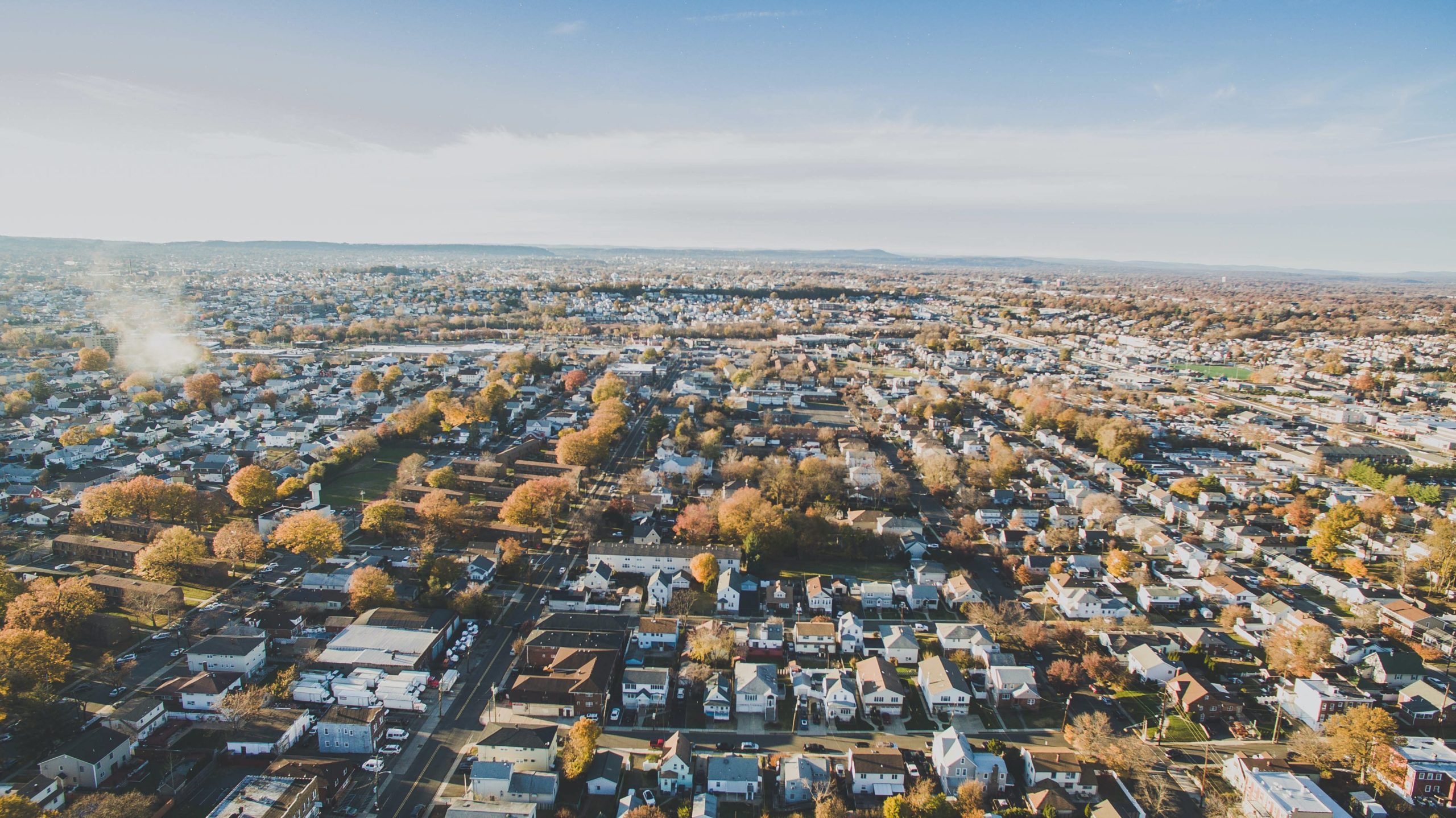Power of the Purse: The Contributions of Black Immigrants in the United States
Date: March 19, 2020

As part of our Power of the Purse research brief series, we take a look at how Black immigrants in the United States are making their mark today as workers, consumers, taxpayers, and voters.
Compared to larger immigrant groups like Hispanics or Asians, there has been little research on Black immigrants’ socioeconomic characteristics. Building on our previous research that only looked at immigrants from Sub-Saharan Africa, we expand our scope this year to look at Black immigrants from all over the world to better reflect the wide diversity of these new Americans, regardless of their country of birth. In this brief, we define a Black immigrant as any person who was born outside the United States to non-U.S. citizen parents and who identifies as Black or African American in the American Community Survey.
What the numbers reveal is that the influence of Black immigrants is increasing rapidly. Some of this is due to the growth of their population in the United States. Between 2010 and 2018, the number of Black immigrants grew from 3.3 million people to more than 4.3 million—an increase of 30 percent. Our findings show that Black immigrants punch well above their weight in many respects.
Black immigrants have higher than average rates of naturalization and English language proficiency among immigrants. They also serve in critical roles in the healthcare industry—an industry facing unprecedented labor shortages. We also find that African immigrants, many of those who come through the diversity visa lottery or as refugees, actually have much higher levels of educational attainment than the overall U.S. average. Altogether, we find that Black immigrants are significant contributors to the U.S. economy. In 2018 alone, they earned more than $133 billion, paid almost $36 billion in taxes, and had a spending power of nearly $98 billion.
“The Power of the Purse: The Contributions of Black Immigrants in the United States” finds:
- The number of Black immigrants has increased
significantly since 2010, growing by 30 percent from 3.3 million in 2010 to 4.3
million in 2018. Today, they make up more than 1.3 percent of the total U.S.
population.
- Texas, in particular, has seen its Black immigrant population increase significantly. From 2010 to 2018, the number of Black immigrants increased by almost 81 percent, from 161,500 to 292,100. Today, it has the largest population of immigrants from Africa (221,700) in the United States.
- Today, there are more than 2.3 million eligible Black immigrant voters. With significant numbers of voters in New York (553,800), Florida (413,700), New Jersey (140,800), Maryland (140,000), and Texas (121,000).
- In 2018 alone, Black immigrant households earned $133.6 billion, paid $36.0 billion in taxes ($22.8 billion in federal income tax and $13.2 billion in state and local taxes), and had a spending power of $97.6 billion.
- Black immigrants are particularly active in the health care industry, especially as nurses, personal care aides, and nursing assistants. Almost 3 in 10 (27.5 percent) of all Black immigrant workers—or more than 750,000—work in the healthcare sector.
- Among all immigrants, Black immigrants have the highest rates of English language proficiency. More than 90 percent of Black immigrants speak English well or only speak English, compared to nearly 60 percent of Hispanic immigrants and about 81 percent of Asian immigrants.
Population Growth
The number of Black immigrants has increased significantly since 2010, growing by 30 percent from 3.3 million in 2010 to 4.3 million in 2018. Today, they make up more than 1.3 percent of the total U.S. population.
Figure 1: Population Growth, Black Immigrant Population, 2010-2018
| 2010 | 2018 | Change, 2010-2018 | Growth Rate | |
| Black Immigrants | 3,285,795 | 4,270,404 | 984,609 | 30.0% |
| Total U.S. Population | 309,349,696 | 327,167,424 | 17,817,728 | 5.8% |
Digging deeper, we find that the Black immigrant population is increasing rapidly in some key states. While states like New York, Florida, and New Jersey have had longer histories of Black immigration, particularly from the Caribbean, Texas has seen its Black immigrant population grow significantly, mostly from Africa. From 2010 to 2018, the number of Black immigrants rose by almost 81 percent, from 161,500 to 292,100.
Today, Texas has the largest population of immigrants from Africa (221,700) in the United States. Many of them came from Nigeria, a country the Administration recently put on the travel ban list.
Figure 2: Black Immigrant Population by State
| State | 2010 | 2018 | Growth Rate |
| New York | 839,277 | 863,901 | 2.9% |
| Florida | 617,213 | 707,845 | 14.7% |
| Texas | 161,506 | 292,160 | 80.9% |
| Maryland | 173,395 | 247,630 | 42.8% |
| New Jersey | 171,190 | 236,522 | 38.2% |
| Georgia | 139,306 | 202,875 | 45.6% |
| Massachusetts | 142,622 | 185,731 | 30.2% |
| California | 137,925 | 178,403 | 29.3% |
| Pennsylvania | 87,643 | 138,398 | 57.9% |
| Minnesota | 72,283 | 136,313 | 88.6% |
| Virginia | 95,322 | 121,755 | 27.7% |
| Ohio | 58,227 | 92,828 | 59.4% |
| Connecticut | 69,330 | 89,950 | 29.7% |
| Washington | 41,004 | 77,155 | 88.2% |
| Illinois | 51,563 | 75,674 | 46.8% |
| North Carolina | 55,667 | 72,385 | 30.0% |
| Arizona | 24,038 | 41,012 | 70.6% |
| Michigan | 28,073 | 39,776 | 41.7% |
| Colorado | 23,748 | 39,073 | 64.5% |
| Tennessee | 28,994 | 38,282 | 32.0% |
| Missouri | 20,914 | 32,943 | 57.5% |
| Indiana | 23,229 | 31,460 | 35.4% |
| Nevada | 13,663 | 28,961 | 112.0% |
| District of Columbia | 19,338 | 26,260 | 35.8% |
| Iowa | 11,278 | 25,362 | 124.9% |
| Rhode Island | 17,561 | 22,983 | 30.9% |
| -- All Other States | 161,486 | 224,767 | 39.2% |
Overall, however, we find that Black immigrants come from a diverse range of countries. While the Caribbean and Sub-Saharan Africa are the two largest regions of birth for Black immigrants, significant numbers also come from Central and South America, as well as other countries like Canada and the United Kingdom.
Figure 3: Black Immigrant Population by Region of Birth, 2018
| Region of Birth | Number of Black Immigrants | Share of All Black Immigrants |
| Sub-Saharan Africa | 1,857,620 | 43.5% |
| Caribbean | 1,947,585 | 45.6% |
| Central America | 135,688 | 3.2% |
| South America | 170,561 | 4.0% |
| Other | 158,950 | 3.7% |
Figure 4: Country of Birth of Black Immigrants, 2018
| Country of Birth | Number of Black Immigrants | Share of All Black Immigrants |
| Jamaica | 694,208 | 16.3% |
| Haiti | 667,943 | 15.6% |
| Nigeria | 369,740 | 8.7% |
| Ethiopia | 276,897 | 6.5% |
| Ghana | 195,710 | 4.6% |
While still relatively a small share of the overall population, the concentration of Black immigrants in some states means that they may be able to exert electoral pressure in state or local elections. In 2018, there were already more than 2.3 million eligible Black immigrant voters in the United States. In Florida, for example, the number of eligible Black immigrant voters is now almost four times the size of the state’s margin of victory in the 2016 presidential election (112,911).
Figure 5: States with More Than 50,000 Eligible Black Immigrant Voters, 2018
| State | Eligible Black Immigrant Voters |
| New York | 553,837 |
| Florida | 413,786 |
| New Jersey | 140,812 |
| Maryland | 139,796 |
| Texas | 121,528 |
| Georgia | 114,807 |
| Massachusetts | 102,131 |
| California | 98,344 |
| Minnesota | 67,200 |
| Pennsylvania | 66,976 |
| Virginia | 65,578 |
| -- Other States | 446,224 |
| U.S. Total | 2,331,019 |
Economic Clout
In 2018 alone, Black immigrant households earned $133.6 billion in income, which also allowed them to pay significant amounts in taxes. In that same year, Black immigrant households paid $22.8 billion in federal income taxes and $13.2 billion in state and local taxes, leaving them with $97.6 billion in spending power—money that they could spend on supporting local businesses and invest in local housing markets.
Figure 6: Income, Tax Contributions, and Spending Power of Black Immigrant Households, 2018
| Total Household Income | $133.6 Billion |
| Total Taxes Paid | $36.0 Billion |
| -- Federal Income Taxes | $22.8 Billion |
| -- State and Local Taxes | $13.2 Billion |
| Spending Power | $97.6 Billion |
Black Immigrants in the Labor Force
More so than any other immigrant group, Black immigrants tend to concentrate in the healthcare industry. While Black immigrants only make up 1.3 percent of the U.S. population, they make up 3.5 percent of all healthcare workers. In total, more than 750,000 Black immigrants work in the healthcare sector, or almost 28 percent of all Black immigrant workers.
Figure 7: Top Industries for Black Immigrant Workers, 2018
| Industry | Number of Black Immigrant Workers | Share of Workers, Black Immigrant |
| Taxi and Limousine Services | 71,149 | 12.6% |
| Home Health Care Services | 113,908 | 7.7% |
| Nursing Care Facilities | 134,433 | 7.4% |
| Bus Service and Urban Transit | 32,213 | 5.9% |
| Residential Care facilities | 63,790 | 5.7% |
Also, the three most popular occupations held by Black immigrant workers were healthcare-related—namely, nursing assistants, registered nurses, and personal care aides. Black immigrants’ contributions to the U.S. healthcare industry come at a time when demand for healthcare workers is at an all-time high. As Americans continue to age, the number of new healthcare jobs will increase more than any other occupation field in the future, making Black immigrants critical to the industry’s future.
Figure 8: Top Occupations for Black Immigrant Workers, 2018
| Occupation | Number of Black Immigrant Workers | Share of All Black Immigrant Workers |
| Nursing Assistants | 146,980 | 10.2% |
| Registered Nurses | 126,593 | 3.8% |
| Personal Care Aides | 82,605 | 5.6% |
| Commercial and Truck Drivers | 78,795 | 2.1% |
| Janitors and Building Cleaners | 77,491 | 2.9% |
Given that so many Black immigrants work as healthcare workers at nursing homes, care facilities, and hospitals, it is not surprising that this immigrant group has lower entrepreneurship rates relative to other immigrants. Despite this, we still find that more than 201,000 Black immigrants owned and worked for their own business in 2018.
Figure 9: Black Immigrant Entrepreneurs
| Number of Black Immigrant Entrepreneurs | 201,868 |
| Entrepreneurship Rate | 7.4% |
We also find that Black immigrants overall have educational attainment levels similar to that of the general U.S. population. In particular, we find that Black immigrants from Africa have some of the highest educational attainment levels in the country, with almost 40 percent having at least a bachelor’s degree and nearly 16 percent having an advanced degree. This means that African immigrants are more likely than the U.S.-born population to hold a master’s, professional, or doctorate level degree.
Figure 10: Educational Attainment Levels, 2018
| All Black Immigrants | African Immigrants | All Immigrants | U.S.-Born Population | |
| Less than High School | 15.6% | 12.6% | 26.9% | 8.4% |
| High School or Some College | 54.3% | 48.5% | 41.1% | 58.8% |
| Bachelor's Degree | 18.2% | 23.0% | 18.1% | 20.4% |
| Advanced Degree | 11.9% | 15.9% | 13.9% | 12.4% |
Integration
On two important measures of integration, English language proficiency and naturalization, we find that Black immigrants have better outcomes than other comparable immigrant groups. Given that many Black immigrants come from former British colonies in the Caribbean and Africa—such as Jamaica, Ghana, and Nigeria, where English often has remained an official language—90 percent of black immigrants can speak English at least well, and more than 41 percent speak only English. These rates are higher than the rate of English language proficiency among Hispanic immigrants, of whom only 60 percent speak English well or better, and among Asian immigrants (about 81 percent).
Figure 11: English Language Proficiency Among Immigrants by Group 2018
| Hispanic Immigrants | Asian Immigrants | Black Immigrants | |
| Does Not Speak English | 14.1% | 4.7% | 2.5% |
| Speaks English, But Not Well | 26.2% | 14.1% | 7.4% |
| Speaks English Well, Very Well, or Only English | 59.6% | 81.3% | 90.0% |
Black immigrants also have slightly higher rates of naturalization than the overall documented immigrant population in the United States. Whereas 65.0 percent of documented immigrants in the United States have naturalized, 68.5 percent of Black immigrants have. Among sub-groups, this share is even higher. For example, nearly three out of four Black immigrants from the Caribbean are naturalized citizens. Meanwhile, immigrants from Sub-Saharan Africa have slightly lower naturalization rates, perhaps due to their more recent history of immigration.
Figure 12: Naturalization Among Documented Immigrants, 2018
| Group | Naturalization Rate |
| All Black Immigrants | 68.5% |
| -- Immigrants from Sub-Saharan Africa | 61.6% |
| -- Immigrants from the Caribbean | 74.3% |
| -- Other Black Immigrants | 71.2% |
| All Immigrants | 65.0% |
Conclusion
The story the data tells is clear: America’s 4.3 million Black immigrants are already helping power the U.S. economy. As they continue to grow and establish firmer footholds in the United States, they are certain to bolster even more businesses and communities in the years to come.






